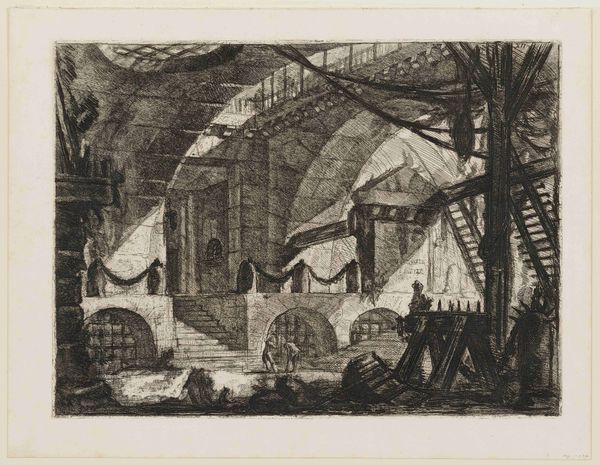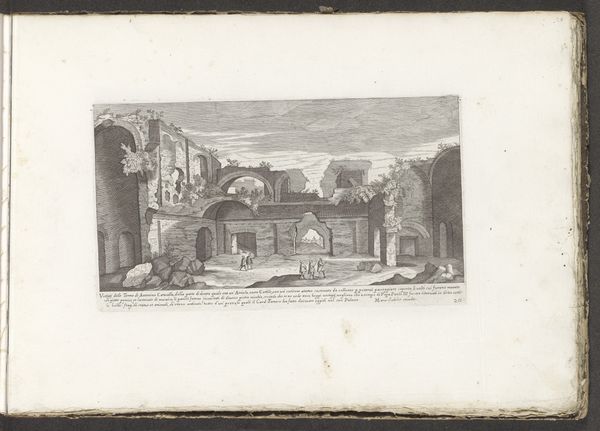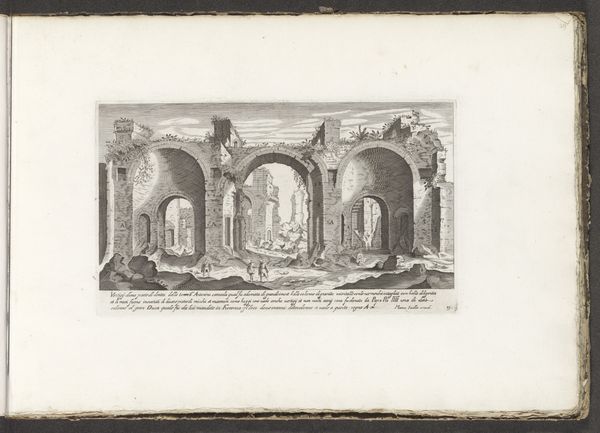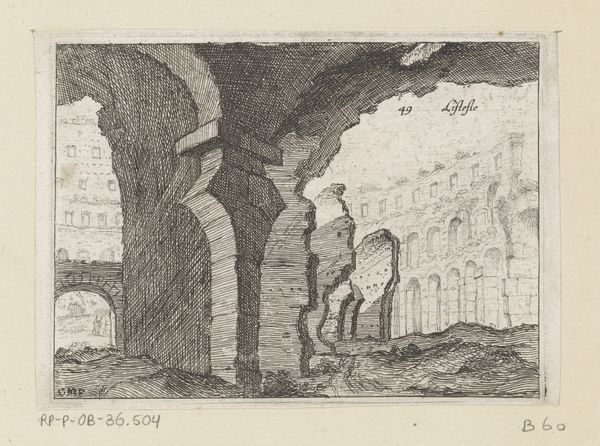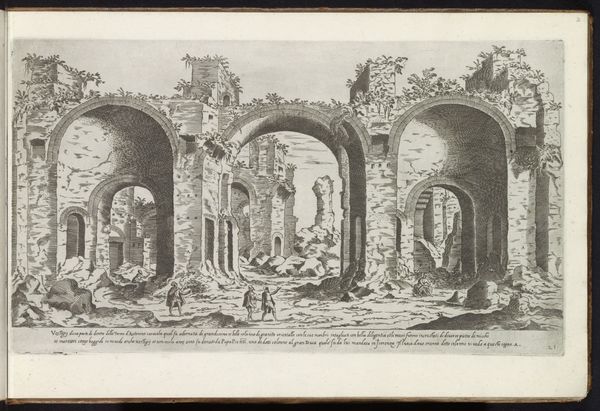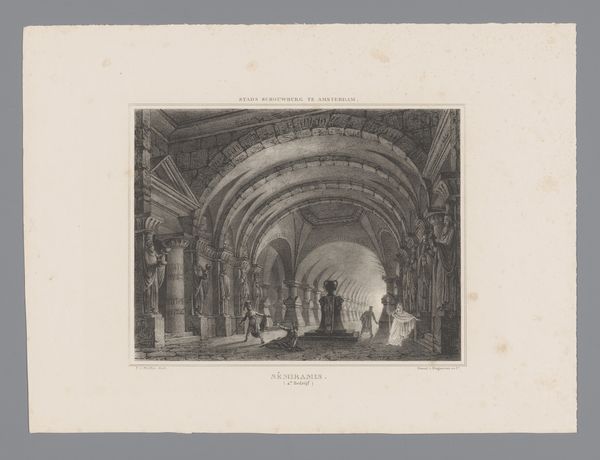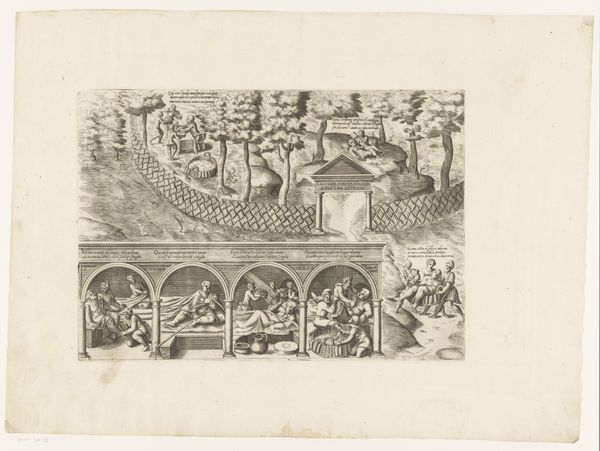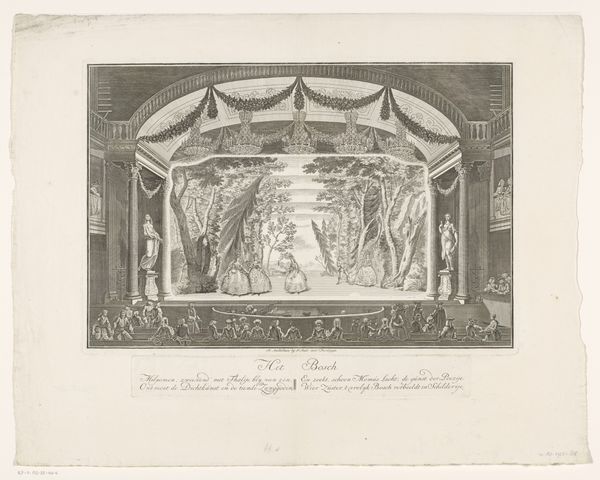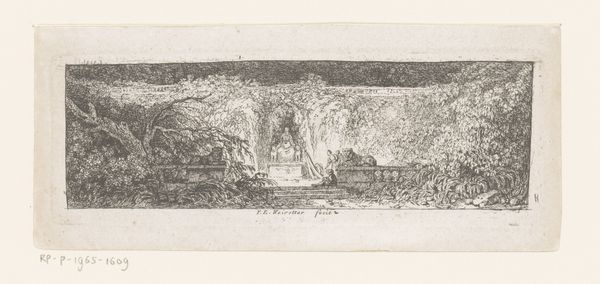
#
photo of handprinted image
#
aged paper
#
toned paper
#
light pencil work
#
ink paper printed
#
pencil sketch
#
old engraving style
#
personal sketchbook
#
sketchbook drawing
#
sketchbook art
Dimensions: height 132 mm, width 177 mm
Copyright: Rijks Museum: Open Domain
Editor: This is Giovanni Battista Piranesi's "Thermen van Trajanus te Rome," created around 1745. It's an etching, and it gives such a sense of decay and grandeur at the same time. It’s incredible! How do you interpret this work? Curator: Piranesi’s work is fascinating. He wasn’t just documenting Roman ruins; he was actively constructing a specific image of them. Notice how he uses scale and dramatic lighting. It creates a kind of sublime experience of Roman power. He’s playing with the politics of ruins – Rome as a fallen empire, but one whose influence still looms large. Editor: So, it’s not just about historical accuracy? Curator: Exactly. He’s creating a *mood* and a statement. The prints became incredibly popular with wealthy Europeans on the Grand Tour. Consider the role these images played: How do you think they influenced perceptions of Roman history, or even contemporary political ambitions in Europe? Editor: That’s really interesting. So the 'truth' of the ruin becomes secondary to the message being conveyed? Did the buyers realize this was a romanticized depiction? Curator: To some extent, yes. The market for these prints encouraged drama and spectacle. He was catering to a desire for a certain kind of historical experience. I'd even argue his focus moved from historical depiction to artistic and political propaganda. Editor: I never thought about the Grand Tour influencing art this directly. It definitely gives a new layer to appreciating the work. Curator: And that’s what is so vital about viewing it through a critical, historical lens. It provides context to social standing and power dynamics. Editor: Well, this conversation really changed my perspective on Piranesi. Thanks! Curator: It's been a pleasure! Examining art’s role in shaping our understanding of history and politics is incredibly insightful.
Comments
No comments
Be the first to comment and join the conversation on the ultimate creative platform.
